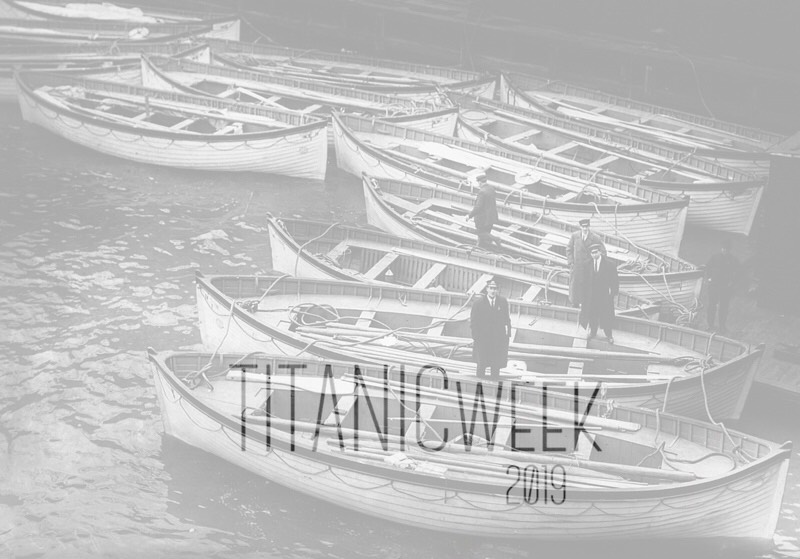“My God, Don’t Ask Me Too Much”: Daniel Warner Marvin & Mary Farquharson Marvin
Mary Farquharson was born in Edinburgh, Scotland, in 1894. She emigrated to New York with her parents when she was 9 years old.
Mary’s mother Jessie and her Aunt Margaret established a successful modiste business, Farquharson & Wheelock. So successful, in fact, that the Scottish atelier would go on to produce a gown worn by Cornelia Vanderbilt and others displayed in the Metropolitan Museum of Art.

A portrait of Mary, originally published in the Butler Citizen (Pennsylvania) in 1914. Courtesy of Encyclopedia Titanica as provided by Gavin Bell.
Daniel Warner Marvin, by contrast, was New York born-and-raised. His daddy Henry was the co-founder of the famed American Mutoscope and Biograph Company. It was the premier motion picture company at the time, founded in part by William Kennedy Dickson, a scientist who had only just left the employ of Thomas Edison, and which innoculated the founders against Edison's notorious litigious approach.

Daniel Warner Marvin.
We don't know how Daniel and Mary met. What we do know is that when they fell in love, Daniel was only 18, and Mary was still in school at 17. They wed in a civil ceremony on January 8, 1912, without their parents' knowledge.
Young Mary found herself pregnant almost immediately thereafter. Once found out, Daniel and Mary had a staged do-over wedding in her parents' home on March 12, 1912, which was filmed. It's reported that this ceremony was the first wedding ever "cinematographed".
Mary's wedding gown was designed, of course, by Farquharson & Wheelock, and Mary was featured in Vogue.

Still from Daniel & Mary's "cinematographed" wedding, filmed on March 12, 1912.
Daniel and Mary elected to honeymoon in Europe, departing on the Mauretania. And in a twist of cruel, even maniacal fate, they were set to return to New York on the Carpathia--the very ship that rescued Titanic survivors--but were persuaded by Captain Smith, a friend of the family, to take the trip on Titanic with him.
Before they departed, Daniel's father gave him a hand-crank camera.
The young Marvins took to suite D-30. It's reported that they were fairly private during the voyage, and spent a significant amount of time filming around the ship.
After the collision at 11:40 p.m., a steward knocked on the couple's door around 12:25 a.m. He advised that lifeboats were being loaded as a precaution.
Mary dressed in a life-vest and a fur coat, and Daniel led her up to the boat deck. Mary was sent off in Lifeboat 10, which contained a number of very young children, including Titanic's youngest and last-to-die survivor: Millvina Dean, who was only two months old.
We know of Mary and Daniel's last exchange thanks to Mary herself.
"My God, don’t ask me too much," she said [when being asked after by a reporter]. "Tell me, have you any news from Dan? He grabbed me in his arms and knocked down men to get me into the boat. As I was put in the boat he cried: 'It’s all right, little girl; you go ahead, I will stay a while. I’ll put on a life preserver and jump off and follow your boat.' As our boat shoved off he threw a kiss at me, and that is the last I saw of him."
As reported in the New York Times dated April 19, 1912. © Citation: Holman, Hannah. "Titanic Voices: 63 Survivors Tell Their Extraordinary Stories," 2011.
It's been reported that when Mary realized that Daniel was not among the saved, she fainted.
Daniel's body, if recovered, was never identified.

Titanic survivors on board the rescue ship Carpathia. Courtesy of Library of Congress.
Mary gave birth to Daniel's daughter in October of 1912. On Christmas Day of 1913, Mary married her late husband's best man, Horace de Camp. Together, they had two children, and Horace adopted Daniel's daughter.
Mary spent the remainder of her life in the Adirondacks.
Mary's first daughter disclosed that tensions between Mary's family and the grieving Marvin family were heightened in the wake of Daniel's loss. Specifically, she said that Mary was determined to keep the Marvins from ever learning too much about their son's final days on Titanic. I doubt we'll ever know why.
Mary was reportedly reticent to talk about Titanic, going so far as to decline multiple invitations to survivors' reunions. She did assert, however, that she had seen a man use a revolver to force his way into a lifeboat.
As she progressed in years, Mary relaxed her sense of privacy just enough to confide a small amount of things in her young grandson, Stuart de Camp. According to Stuart, he eventually eased his grandmother into discussing Titanic--he recalls that he was around 9 years old at the time.

Moose River in the Adirondacks, as taken by Anne LaBastille in May 1973 for the Enivronmental Protection Agency.
Around that time, Mary asked Stuart to row out in a family boat with her to the center of Moose River in upstate New York. She brought with her two items completely unknown to Stuart.
Eventually, Mary instructed Stuart to cease his rowing.
As she waited for the boat to still, she revealed the mystery items one by one.
The first was the film reel of her wedding to Daniel Marvin; that is, the staged version her parents had arranged after discovering their elopement.
The second, said Stuart, was the reel Daniel had filmed while he and Mary sailed on Titanic—that same reel that young Mr. Marvin had thrown down into the lifeboat, for his beloved wife to safeguard.
And then, before the eyes of her bewildered grandson, Mary threw both reels into the river.
share
